Although I have already done some posts on my pickled eggs, as per my recent wont of photo posts of me making my various recipes, I took a lot of photos yesterday when I made pickled eggs. Sigh, the stores know how to get me every time when they advertise eggs on sale!
Before I went to buy the eggs, I prepared some extra ice, which would be needed later on once the eggs were boiled:
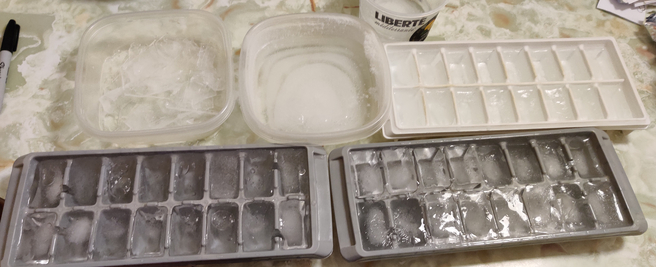
Then I went out to do some shopping and I purchased three flats of 30 eggs each, for a total of 90 eggs, at the advertised price of $4.44 CDN per flat (14.8 cents per egg).
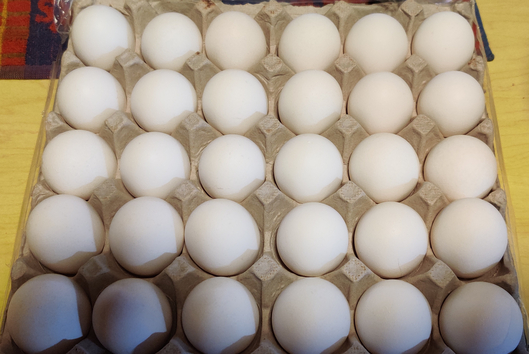
I took out ten jars with mason openings; although the jars shown aren’t strictly speaking mason jars, they have mason jar threading, and I’ve never had trouble with them.
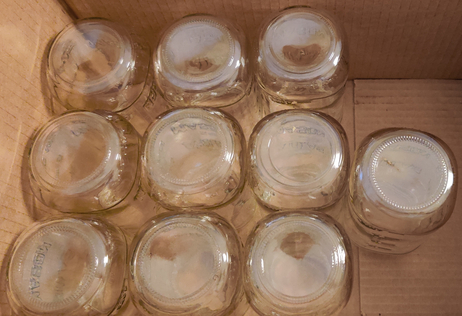
Of course, I also prepared ten rings and lids (in this case, clean reused lids, since I expect that I will be eating the eggs from most of the jars):
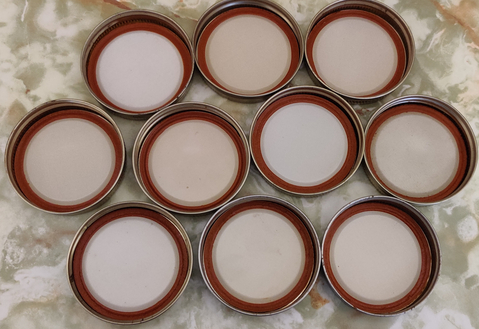
Cold water was put in a pot and heated, for later use when boiling the jars.
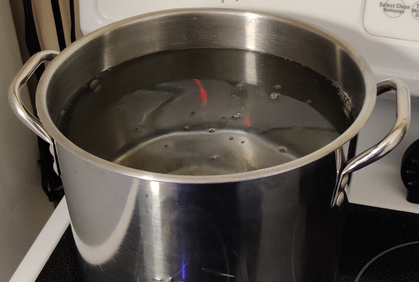
I boiled and shelled the eggs over two sessions of 45 eggs each, one after the other.
First, eggs were placed in a pot:
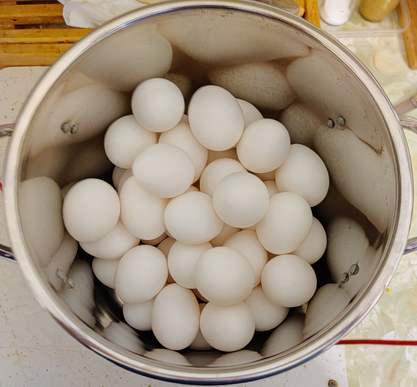
Cold water was added to the pot with the eggs, covering the eggs.
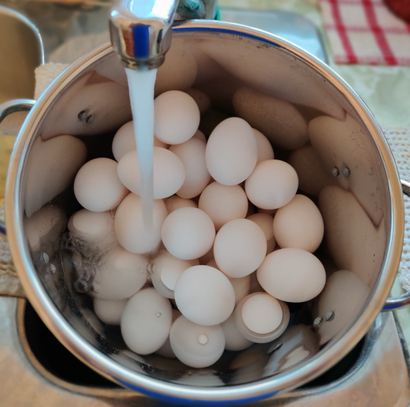
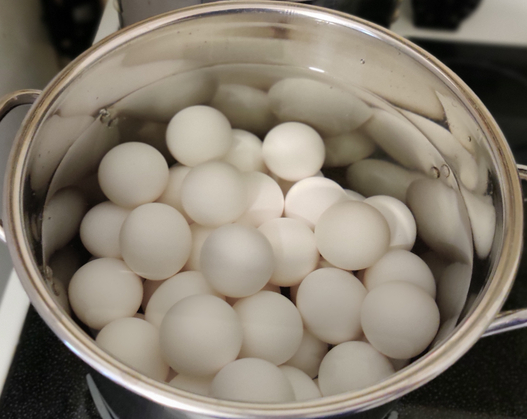
The stove was turned on, and I brought the eggs to a boil, and then boiled them for eight minutes.
During the time it took to heat up and boil the eggs, the first thing I did was pour myself a nice beer:

Yes, that is a double sized, 750mL bottle of beer containing 9% alc/vol; it’s called “Don de Dieu”, and it’s a bottle refermented abbey-style triple wheat beer, from Unibroue, in Chambly, Québec.

Back to work, still while the eggs were heating up and boiling, I prepared some pickling solution:
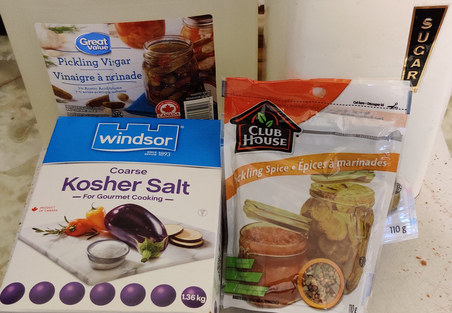
Vinegar was measured out into a pot (in this case, 7-1/2 cups; according to my recipe, I knew I would need another 3-3/4 cups, as well as the commensurate amounts of sugar, salt, and spices) :
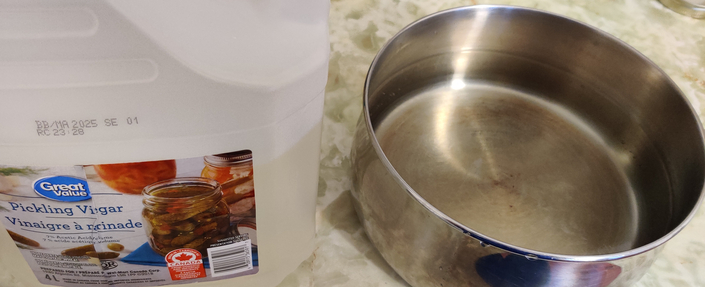
Sugar (in this case, 1 cup) was added:
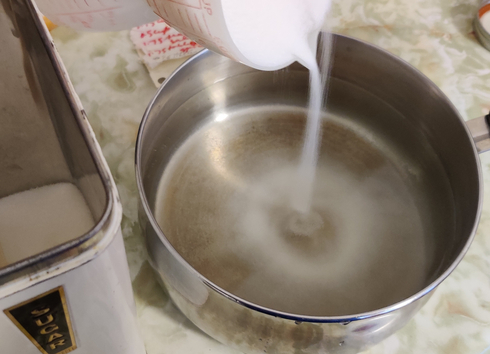
Salt (in this case, 3-1/2 teaspoons) was added to the pickling solution:
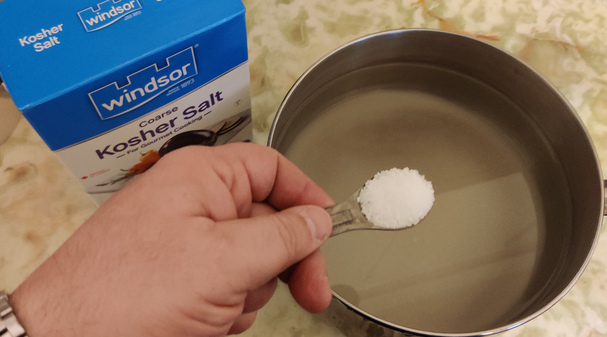
A commercial pickling spice blend (in this case, 3-1/2 tablespoons) was added to the pickling solution:
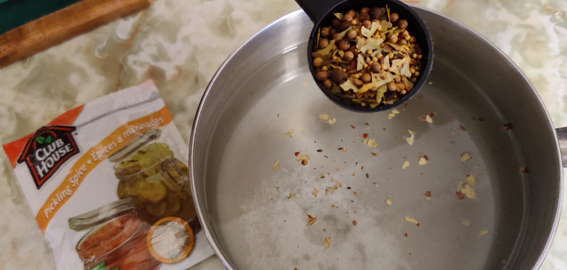
The pickling solution was covered and put aside, to be boiled later.
Soon, the eggs had reached the boiling point, and the eggs were boiled for eight minutes:
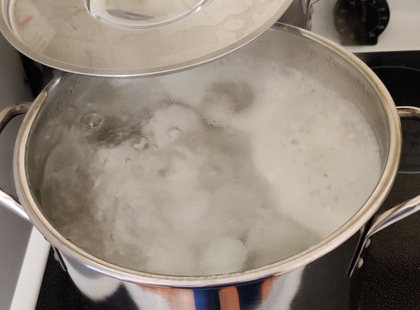
After eight minutes of boiling, the boiling water was immediately drained from the pot of eggs, and cold water was added to the pot of eggs, as well as ice:
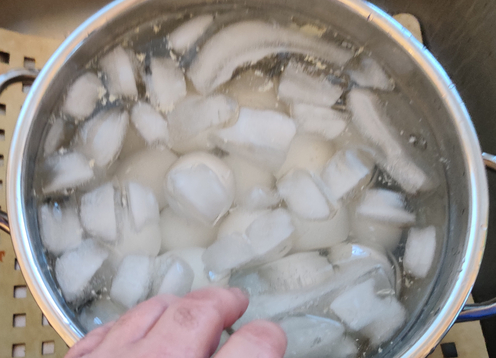
The ice water and eggs were gently mixed by hand, in order to quickly and thoroughly cool the eggs, which takes a few minutes. This is necessary so as to avoid the development of a greenish-blackish ring around the egg yolks (which is harmless, but aesthetically undesirable), as well as to aid in the peeling; the sharp temperature change helps dislodge the membrane just inside the shell, which will then make it easier to remove the shells and minimize tearing.
The eggshells were then peeled:
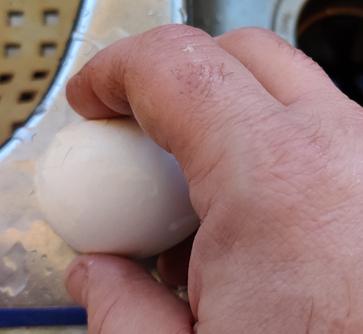
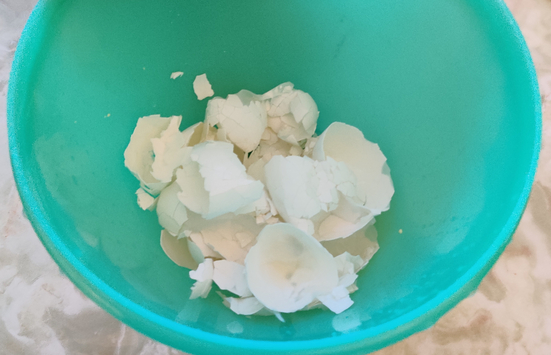
Shelled eggs were rinsed in cool water and placed in a couple of bowls:
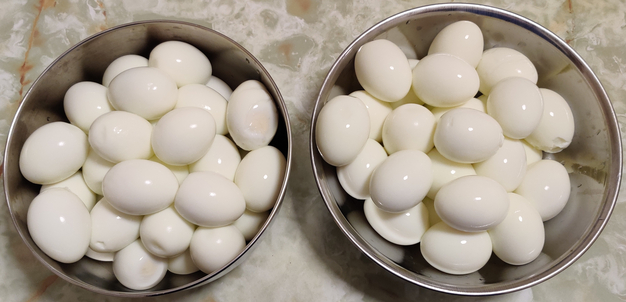
Sometimes, there are tears when shelling eggs. In yesterday’s case, there were 25 eggs with tears; however, tears don’t affect the eggs’ ability to be pickled, they just make the eggs not always look as nice. As such, these eggs were merely placed in a separate bowl so that they could be bottled together for personal consumption, and to distinguish them from the nicely peeled eggs, should I decide to give away a jar of the “nice” eggs (see below).
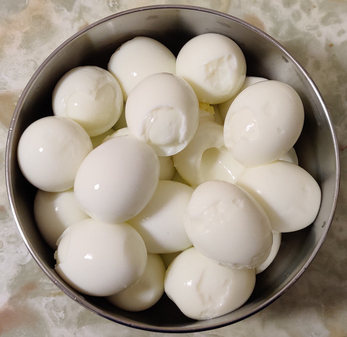
At this point, a few hand tools were needed: Some tongs, a ladle, a jar holder, and a slotted spoon. Not shown: mason jar filler.
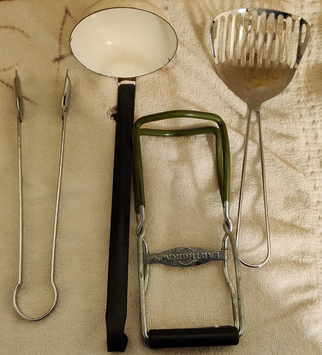
At this point, the water which was heated earlier for the bottles was brought up to boiling again, and jars were put in the water once it was boiling:
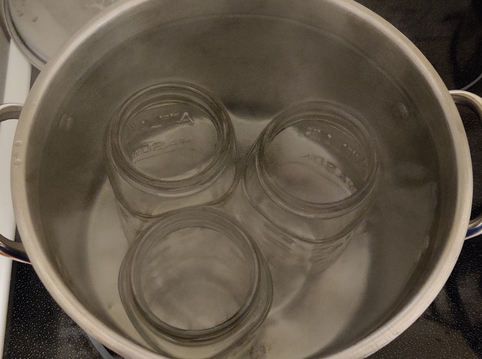
At the same time, the pickling solution was brought to a boil:
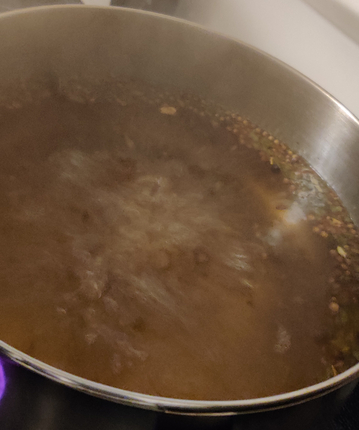
In a third pot — the same one in which the eggs were originally boiled — fresh water was brought to a boil, and eggs (in this case, nine eggs at a time, the number of eggs which fit in the size of jars used) were added, once all three pots were boiling:
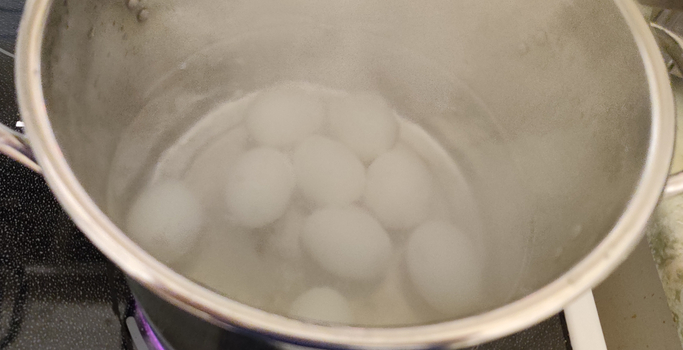
Eggs are only kept in the boiling water long enough to take out a jar from the boiling water bath (just as the jars need only be in the boiling water bath for the time it takes to put the eggs in the boiling water bath.)
A jar is taken out of the boiling water bath, and the eggs in the boiling water bath are transferred to the hot jar:
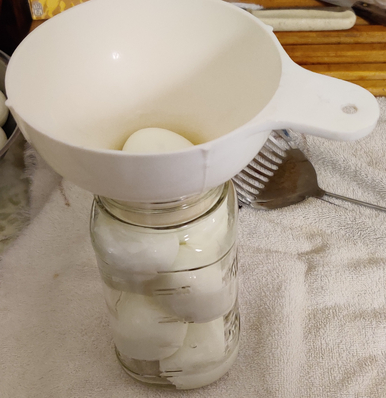
The pot of hot pickling solution — which is kept simmering to boiling on the stove in between filling jars — is brought over, and hot pickling solution is added to the hot jar with the hot eggs:
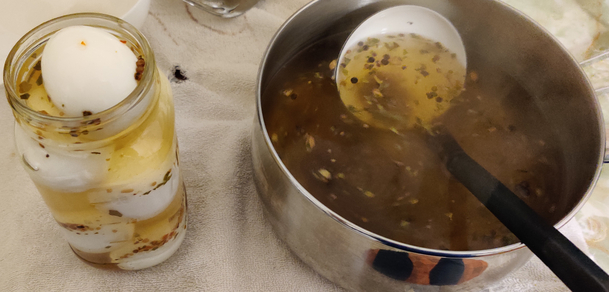
The lids and rings were individually placed in the mason jar hot water bath and immediately placed on the filled jars.
Seven jars were each filled with nine eggs without tears, and three jars were each filled with nine eggs with tears.
Once all the jars were filled, they were placed in a refrigerator overnight to cool the contents relatively quickly, in order to avoid the development of greenish-blackish rings around the egg yolks (which is harmless, but aesthetically undesirable.)
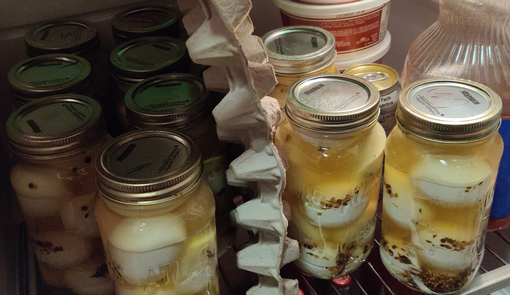
This morning, I took the jars out of the fridge, and wiped down the jars, since when filling the jars and putting on the lids, sometimes the pickling solution spilled a bit.
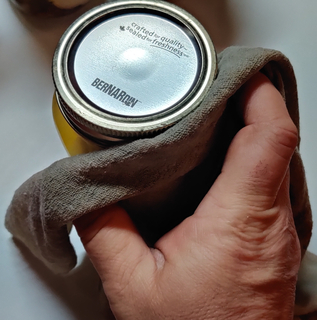
This included taking off the rings to wipe down the necks of the jars, which wasn’t a problem since all the lids on the jars formed a good vacuum seal.
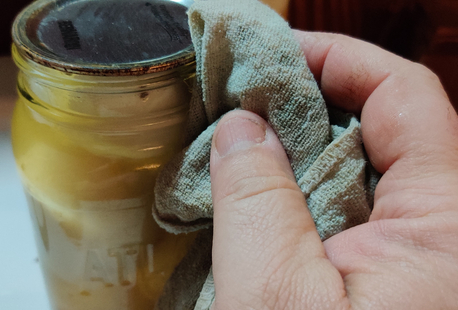
I have a computer file of labels I use for my pickled eggs, which I printed out. I do both English and French parts because I live in a primarily French speaking area, and therefore it’s good to have both languages for when I give away and sell jars. I cut out the individual labels, folded them over lengthwise, wrote the date on the backsides, punched a hole in each, and looped an elastic band in the hole of each label.
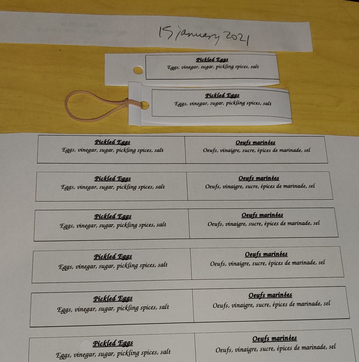
I placed the labels around the necks of the jars. In this photo, the three jars of eggs with tears are in the front row and on the right.
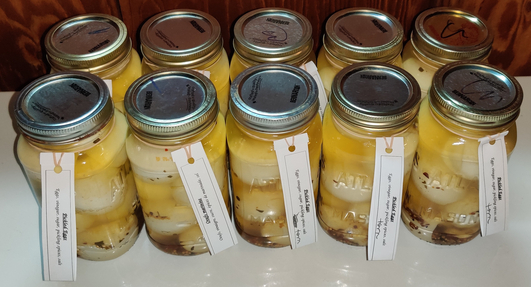
Since I already had some pickled eggs in stock (a total of 91 over seven jars), which I made about a month ago, I moved them around to make space in the storage room:
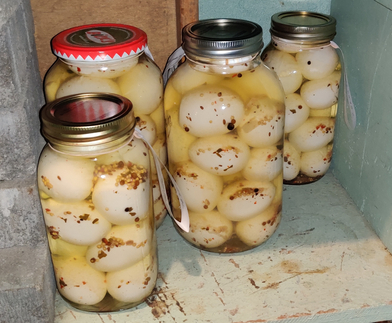
Things were moved around, and yesterday’s jars of pickled eggs are now all put away, on the bottom shelf below the existing jars:
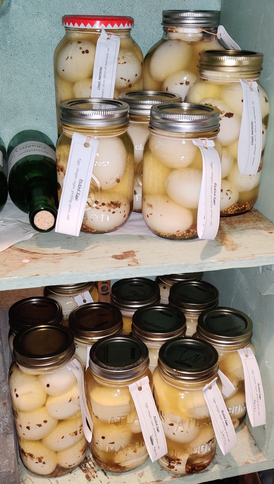
As you’ll notice, there are also three extra jars of six pickled eggs in the stock I’d already had, that were not in the above photo; these will likely be given as gifts before I give away any of yesterday’s production since new lids were used when they were made.
And if I don’t give out any jars as gifts? Then I’ll have enough pickled eggs for myself until at least early summer of this year!
ps: And the beer? Of course it was good! It’s a beer I’ve had several times before, it’s from my favourite brewery (Unibroue — no, not the multinational brewery with a slightly different spelling), barring the fact that my favourite beer is from another brewery, and I have a particular taste for Belgian abbey beers and wheat beers.
